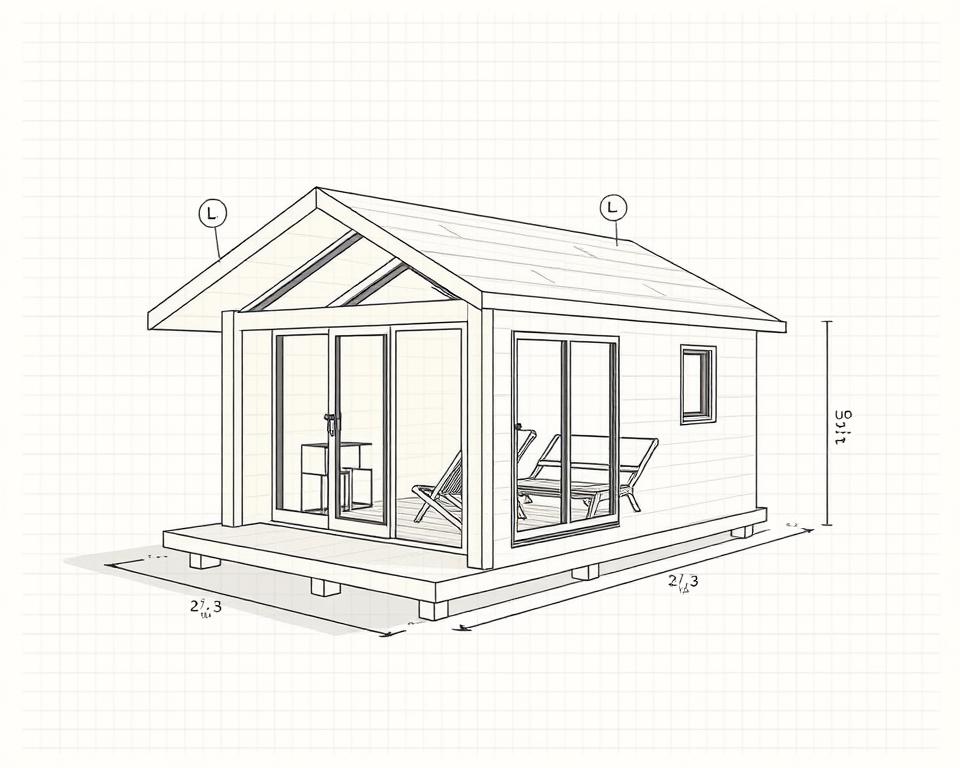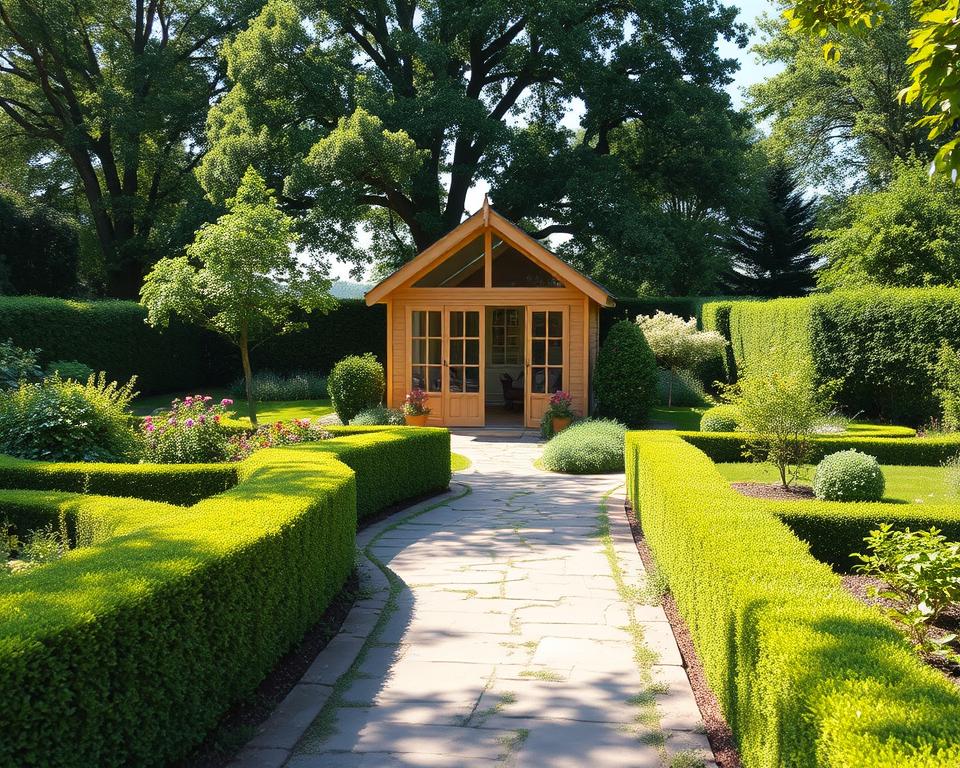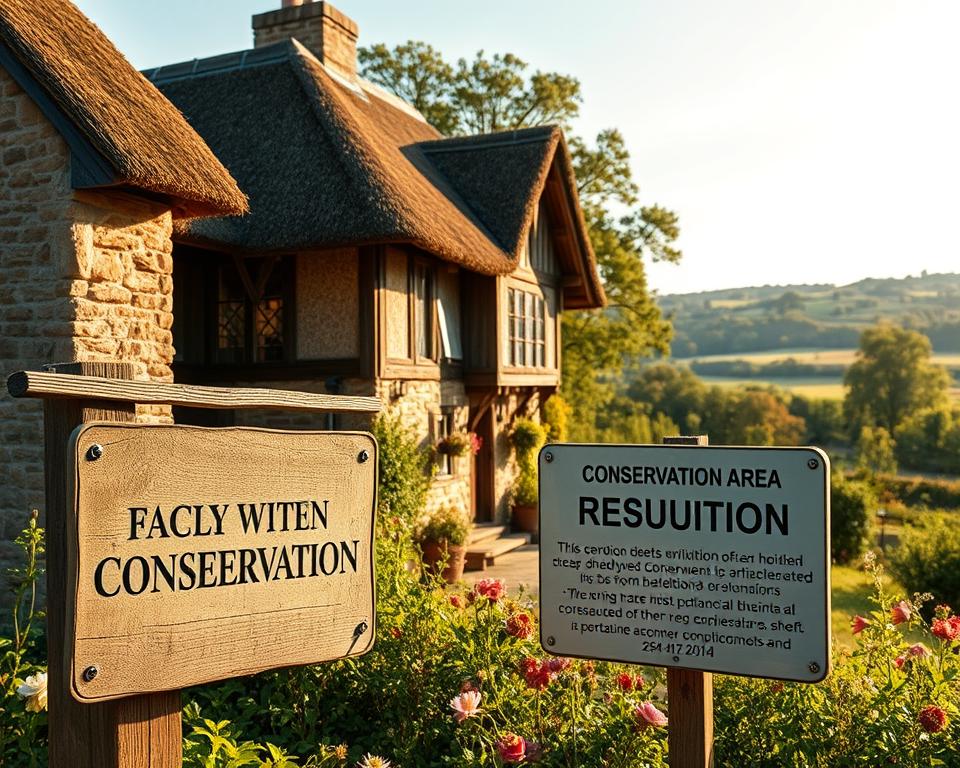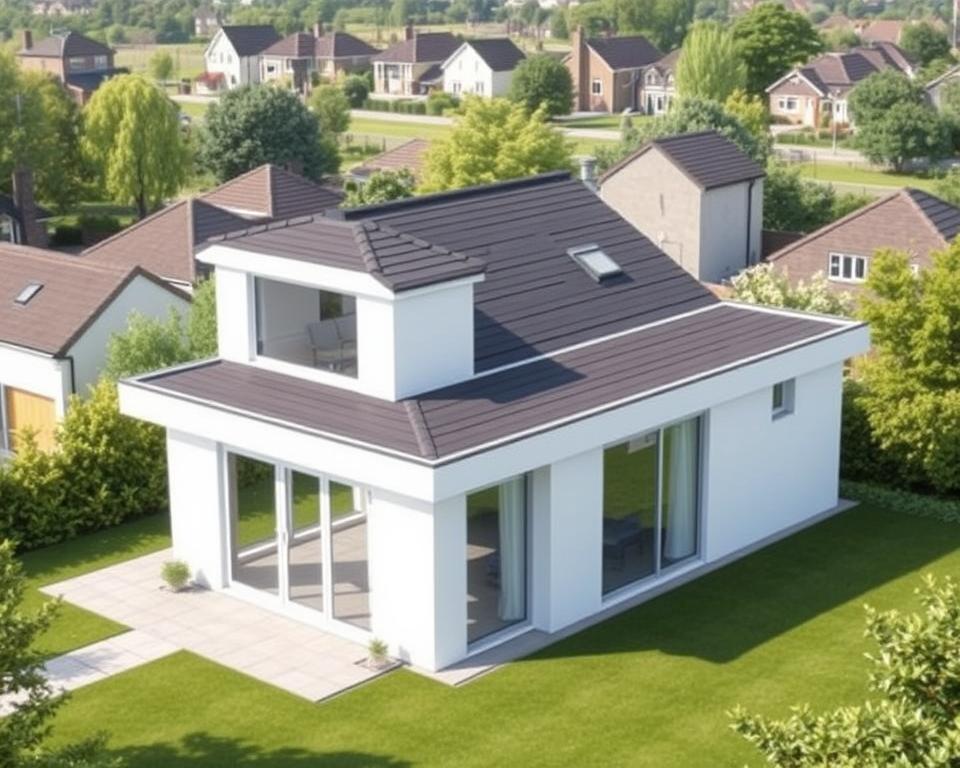Do You Need Permission for a Summer House in the UK?

Adding a summer house to your garden can create the perfect retreat for relaxation or working from home. Many homeowners across the UK wonder about planning permission summer house requirements before starting their project. The good news is that most garden structures don’t need formal approval.
Garden building regulations UK vary depending on your property type and location. Your summer house might qualify as permitted development, which means you can build without applying for permission. But certain factors like size, height, and placement can change this.
Understanding summer house permission requirements saves time and prevents costly mistakes. Properties in conservation areas face stricter rules than standard residential homes. Listed buildings have even more limitations. Your local council website provides specific guidance for your area.
Before purchasing materials or hiring contractors like Dunster House or Tuin, check if your plans meet permitted development criteria. This simple step protects your investment and ensures your new garden building complies with all regulations.
Inhaltsverzeichnis
Key Takeaways
- Most summer houses under 2.5 metres high don’t need planning permission
- Permitted development rights cover many standard garden buildings
- Conservation areas and listed properties have stricter requirements
- Building regulations differ from planning permission rules
- Your summer house location affects permission requirements
- Always check with your local council before starting construction
Understanding Planning Permission Requirements for Garden Buildings
Garden buildings have become increasingly popular across the UK, offering extra space for work, relaxation, or storage. Before starting your project, it’s essential to understand when garden building planning permission is required and what rules apply to your property.
What Constitutes a Garden Building
A garden building encompasses any structure built within your property’s grounds. Common examples include:
- Summer houses and garden rooms
- Sheds and workshops
- Greenhouses and polytunnels
- Garden offices and studios
- Gazebos and pergolas
Each type falls under specific outbuilding regulations that determine whether you need formal permission before construction begins.
When Planning Permission Becomes Necessary
Most garden buildings fall under permitted development rights, meaning you won’t need planning permission. You will need to apply for permission when:
- The building exceeds 2.5 metres in height within 2 metres of any boundary
- The structure covers more than 50% of your garden area
- You’re planning to use it as a separate dwelling
- Your property is in a designated area (conservation area, National Park, or Area of Outstanding Natural Beauty)
- The building faces a highway from your front garden
Difference Between Planning Permission and Building Regulations
Many homeowners confuse these two separate requirements. Planning permission focuses on how your structure affects the neighbourhood’s appearance and character. Building regulations ensure your structure meets safety standards and construction codes. Your project might need one, both, or neither. Summer house building requirements typically don’t include building regulations unless the structure exceeds 15 square metres internally or contains sleeping accommodation.
Permitted Development Rights for Summer Houses
Understanding permitted development rights can save you time and money when planning your garden retreat. These rights allow certain types of development without formal planning permission, provided specific conditions are met. For summer houses, knowing these rules helps ensure your project stays within legal boundaries whilst maximising your garden space.
Maximum Size Limitations Under Permitted Development
Your summer house must not cover more than half your garden area. This includes any existing sheds, greenhouses, or other outbuildings. The summer house size limits apply to the total footprint of all garden structures combined.

Height Restrictions You Must Follow
Specific garden building height restrictions determine how tall your structure can be:
| Roof Type | Maximum Height | Eaves Height |
|---|---|---|
| Dual-pitched roof | 4 metres | 2.5 metres |
| Flat roof | 3 metres | 2.5 metres |
| Any other roof type | 3 metres | 2.5 metres |
Distance Requirements from Boundaries
Position matters when exercising permitted development rights. If your summer house exceeds 2.5 metres in height, it must stand at least 2 metres from any boundary. Single-storey structures below this height can be closer to boundaries, making them popular choices for smaller gardens.
Size and Height Restrictions for Summer Houses
When planning your garden retreat, understanding summer house dimensions is essential to avoid costly mistakes. The UK has specific rules that govern how big and tall your garden building can be without needing formal permission.
Your summer house location directly affects its permitted size. If you place it between one and two metres from your property boundary, the floor area cannot exceed 30 square metres. This restriction helps protect your neighbours from overshadowing and maintains reasonable spacing between properties.

For buildings positioned more than two metres from any boundary, you have greater flexibility with size limitations outbuildings face. The crucial factor becomes height rather than floor area. These structures must not exceed four metres at their highest point, which typically allows for a comfortable pitched roof design.
| Distance from Boundary | Maximum Floor Area | Height Limit |
|---|---|---|
| 1-2 metres | 30 square metres | 2.5 metres (eaves) |
| Over 2 metres | No specific limit* | 4 metres (ridge) |
| Flat roof designs | Varies by location | 2.5 metres maximum |
*Subject to other planning restrictions
The maximum height garden buildings can reach depends on roof style. Flat-roofed summer houses must stay under 2.5 metres tall, whilst dual-pitched roofs allow up to four metres at the ridge and 2.5 metres at the eaves. These measurements start from the highest natural ground level adjacent to the building.
Location Matters: Where You Can Place Your Summer House
Choosing the right spot for your summer house can make the difference between a straightforward installation and a lengthy planning application process. The location of your garden building significantly impacts whether you’ll need formal permission from your local council. Understanding these summer house placement rules helps you avoid costly mistakes and ensures your new garden retreat complies with UK regulations.
Front Garden Restrictions
Placing a summer house in your front garden requires careful consideration. Any structure positioned between your home’s front wall and the highway needs front garden planning permission, regardless of its size. This rule applies to all outbuildings, including sheds, greenhouses, and summer houses.
The front garden is defined as any area forward of the principal elevation of your house that faces a road. Even small structures in this zone fall outside permitted development rights, making a formal planning application necessary.

Back Garden Placement Rules
Back gardens offer more flexibility for summer house installation. Most structures here fall under permitted development rights if they meet specific criteria:
- The building covers less than 50% of your garden area
- It sits at least 2 metres from any boundary
- The structure remains single-storey
- Total height stays below 2.5 metres for flat roofs or 4 metres for pitched roofs
These garden building location requirements allow most homeowners to install reasonably sized summer houses without formal applications.
Conservation Area Considerations
Properties within conservation areas face stricter controls. Any outbuilding exceeding 10 cubic metres requires planning permission, even in back gardens. Local councils impose these tighter restrictions to preserve the character and appearance of historically significant neighbourhoods.
Listed Buildings and Conservation Areas
Owning a property in a conservation area or with listed status brings unique responsibilities when planning garden improvements. Your listed building summer house project requires careful consideration of heritage property regulations to preserve the historical character of your home and neighbourhood.
Properties with Grade I, Grade II*, or Grade II listed status need listed building consent before installing any garden structure. This requirement applies regardless of the summer house size, even for small sheds or pavilions. The local planning authority assesses each application to ensure the proposed structure won’t harm the building’s special architectural or historic interest.

Conservation area permissions work differently from standard planning rules. While typical properties enjoy permitted development rights for structures up to 50 cubic metres, conservation areas limit this to just 10 cubic metres. Any summer house exceeding this volume requires full planning permission, with designs scrutinised to match the area’s character.
Local conservation officers provide invaluable guidance for navigating heritage property regulations. They can suggest appropriate materials, colours, and architectural styles that complement the historical setting. Traditional timber designs with slate or clay tile roofs often gain approval more readily than contemporary glass and steel structures.
The application process for a listed building summer house typically takes 8-13 weeks. Fees vary between councils but expect to pay around £462 for listed building consent. Conservation area applications cost approximately £234 for householder planning permission.
Permission Summer House Requirements in Special Circumstances
Certain properties in the UK face stricter rules when it comes to installing garden buildings. If your home sits within designated protected areas or has specific planning restrictions, you’ll need to navigate additional requirements before placing a summer house in your garden.
National Parks and Areas of Outstanding Natural Beauty
Properties located within National Parks or Areas of Outstanding Natural Beauty (AONBs) face tighter restrictions than standard residential areas. In these protected landscapes, permitted development rights are significantly reduced. You can only build outbuildings up to 10 square metres without seeking AONB summer house permission. Any structure larger than this modest size requires full planning consent from your local authority.
The national park building regulations aim to preserve the natural character of these special areas. This means even small garden buildings must blend harmoniously with the surrounding landscape.
Properties with Article 4 Directions
An Article 4 direction planning restriction removes all permitted development rights from a property. Local councils typically apply these directions to maintain the character of specific neighbourhoods or streets. If your property falls under an Article 4 direction, you must obtain planning permission for any garden building, regardless of its size.
| Property Type | Maximum Size Without Permission | Planning Required |
|---|---|---|
| Standard Residential | Up to 30 square metres | Only if exceeding limits |
| AONB/National Park | 10 square metres | For anything larger |
| Article 4 Direction | None | Always required |
Flats and Maisonettes Specific Rules
Residents of flats and maisonettes face the strictest limitations. These property types have no permitted development rights for outbuildings whatsoever. Planning permission is mandatory for any summer house installation, even the smallest structures. This rule applies because communal gardens and shared spaces require careful management to ensure all residents can enjoy the outdoor areas fairly.
Building Regulations vs Planning Permission
While planning permission focuses on the appearance and location of your garden structure, building regulations summer house requirements ensure safety and structural integrity. These two systems work independently, meaning you might need one, both, or neither depending on your project’s specifics.
When Building Regulations Apply
Building regulations come into play when your summer house exceeds certain thresholds. Any structure over 15 square metres that includes heating requires building control approval. If you plan to use your garden building for sleeping, building regulations apply regardless of size. For structures between 15 and 30 square metres, you must notify your local building control department before starting work.

Electrical and Plumbing Considerations
Installing power or water in your summer house triggers specific regulatory requirements. All electrical installation requirements fall under Part P of the Building Regulations. This means:
- Only certified electricians can carry out most electrical work
- All installations must include proper earthing and RCD protection
- Certification must be provided upon completion
- Work must be registered with building control within 30 days
Plumbing regulations garden buildings follow equally strict standards. Any water supply or drainage connections require building control approval. The work must comply with water supply regulations to prevent contamination of the mains supply. Professional plumbers familiar with these requirements can ensure your installation meets all necessary standards whilst avoiding costly mistakes.
How to Apply for Planning Permission
The planning application process for your summer house starts with gathering the right documentation. You’ll need to complete the appropriate local authority planning forms, which are available through the Planning Portal or your council’s website. These forms require detailed information about your proposed garden building, including its dimensions, materials, and exact location on your property.
Essential documents for your summer house permission application include:
- Completed application forms
- Site location plan (scale 1:1250 or 1:2500)
- Block plan showing the proposed building (scale 1:200 or 1:500)
- Elevation drawings showing all sides of the structure
- Floor plans if the building has internal divisions
The fee for a householder planning application in England is £206. You can submit your application online through the Planning Portal, which connects directly to your local authority planning forms system. This digital submission method speeds up processing and allows you to track your application’s progress.
| Application Stage | Timeframe | What Happens |
|---|---|---|
| Validation | 5 working days | Council checks all documents are complete |
| Neighbour consultation | 21 days | Adjacent properties receive notification letters |
| Decision period | 8 weeks total | Planning officer assesses the proposal |
Professional architectural drawings might be necessary for complex designs. Many homeowners hire a draughtsperson or architect to ensure their plans meet the technical standards required by the planning application process. This investment often prevents delays caused by incomplete or unclear submissions.
Common Mistakes to Avoid When Installing a Summer House
Building a summer house can transform your garden into a delightful retreat, but certain missteps can turn this dream project into a costly headache. Understanding these common pitfalls helps ensure your garden building complies with regulations and maintains good relationships with neighbours.
Exceeding Size Limitations
One of the most frequent summer house installation mistakes involves misjudging the permitted size. Many homeowners forget to calculate the total garden coverage, which includes all existing structures like sheds and greenhouses. The 50% rule applies to your entire garden space, not just the area where you plan to build.
Ignoring Neighbour Consultations
Failing to discuss your plans with neighbours ranks among the top causes of neighbour disputes garden buildings create. While not legally required for permitted development, informing adjacent property owners prevents future conflicts. A simple conversation can reveal concerns about privacy, sunlight, or views that you can address before construction begins.
Overlooking Local Council Guidelines
National rules provide a framework, but councils often impose additional restrictions. These planning permission errors occur when homeowners assume standard regulations apply everywhere. Your local authority might have specific requirements for:
- Materials used in conservation areas
- Stricter height limits near boundaries
- Design guidelines for visual harmony
- Environmental protection measures
| Common Error | Potential Consequence | Prevention Method |
|---|---|---|
| Building too close to boundary | Enforcement notice | Maintain 2m minimum distance |
| Incorrect height calculation | Demolition order | Measure from highest ground level |
| Wrong roof type | Planning breach | Check dual-pitched restrictions |
Costs Associated with Planning Applications
Building a summer house in your garden might require planning permission, and understanding the financial implications helps you budget effectively. Planning permission costs vary depending on your location and project specifics, but knowing the typical expenses prevents unwelcome surprises.
In England, householder planning applications cost £206. This standard fee applies to most domestic projects, including summer houses that exceed permitted development rights. If you’re applying retrospectively (after construction has begun), expect reduced fees, though building without permission first carries risks.
Building control charges represent another expense to consider. These fees vary significantly between councils, typically ranging from £200 to £400 for garden buildings. Your local authority sets these rates based on the project’s complexity and size.
Additional summer house application fees might include:
- Architectural drawings: £500-£1,500
- Planning consultants: £500-£2,000
- Pre-application advice: £50-£200
- Appeal fees (if needed): Variable
Pre-application advice proves particularly valuable, as councils provide guidance on whether your project meets local requirements. This small investment potentially saves thousands by preventing rejected applications.
Planning permission costs increase if you need specialist reports, such as ecological surveys or flood risk assessments. Listed buildings and conservation areas often require heritage statements, adding £300-£800 to your budget.
Remember that these fees represent just part of your summer house investment. Factor in construction costs, site preparation, and ongoing maintenance when calculating your total budget.
Alternative Options if Permission is Denied
Receiving a refusal for your summer house application can feel disappointing, but several refused application alternatives exist to help you achieve your garden building goals. The key lies in understanding why your application was rejected and choosing the most suitable path forward.
Appealing the Decision
A planning permission appeal offers your first recourse after rejection. You must submit your appeal to the Planning Inspectorate within 12 weeks of receiving the refusal notice. Success rates fluctuate based on the strength of your case, but addressing the specific reasons for refusal significantly improves your chances.
The appeal process involves presenting new evidence or clarifying misunderstood aspects of your original application. Written representations typically suffice for summer house appeals, making the process less daunting than many assume.
Modifying Your Plans
Creating modified summer house plans often provides the quickest solution. Common modifications include:
- Reducing the overall footprint or height
- Repositioning the structure away from boundaries
- Changing materials to better match existing buildings
- Adjusting the roof design to minimise visual impact
Before resubmitting, consult your local planning officer about which changes would address their concerns. This pre-application advice saves time and increases approval likelihood.
Exploring Permitted Development Options
Many applicants discover their original plans exceeded permitted development rights by small margins. Adjusting your design to fall within these rights eliminates the need for formal permission entirely. Consider these maximum dimensions under permitted development:
| Aspect | Maximum Allowed |
|---|---|
| Total garden coverage | 50% of original garden |
| Height (flat roof) | 2.5 metres |
| Height (pitched roof) | 4 metres |
| Distance from boundary | 2 metres (if over 2.5m high) |
Conclusion
Installing a summer house in your UK garden doesn’t have to be complicated. Most homeowners can build their garden structures without seeking planning permission thanks to permitted development rights. This summer house planning permission summary shows that staying within specific size, height, and location limits makes the process straightforward.
Your property type plays a crucial role in determining what permissions you need. Standard residential homes typically have more flexibility than flats or properties in conservation areas. Before starting construction, check if your home has special designations like listed building status or Article 4 directions. These restrictions can change the UK garden building regulations overview for your specific situation.
The best approach is to contact your local council’s planning department before beginning any work. They can confirm your permitted development rights and highlight any special requirements for your area. Taking this simple step saves time and money whilst ensuring your new summer house meets all legal requirements. With proper preparation and understanding of the rules, you can create your perfect garden retreat without unnecessary delays or complications.
FAQ
Do I need planning permission for a summer house in my back garden?
In most cases, you won’t need planning permission for a summer house in your back garden if it falls under permitted development rights. This means the structure must not exceed 50% of your garden area, have a maximum height of 4 metres (dual-pitched roof) or 3 metres (other roofs), and maintain proper distances from boundaries. However, always check with your local council first, as conservation areas, listed buildings, and Article 4 directions can affect these rights.
What’s the maximum size for a summer house without planning permission?
Under permitted development rights, your summer house and any other outbuildings combined must not cover more than 50% of your garden area. If the building is between 1-2 metres from a boundary, it cannot exceed 30 square metres in floor area. The maximum eaves height is 2.5 metres, with overall heights limited to 4 metres for dual-pitched roofs or 3 metres for other roof types.
Can I put a summer house in my front garden?
No, summer houses in front gardens always require planning permission, regardless of size. Permitted development rights only apply to outbuildings in rear gardens. If you want to install any structure in your front garden, you’ll need to submit a formal planning application to your local council, which costs £206 in England.
Do I need building regulations approval for my summer house?
Building regulations typically apply if your summer house is over 15 square metres and includes heating, or if it’s used for sleeping accommodation. Structures between 15-30 square metres require building control notification. Any electrical work must comply with Part P regulations and be completed by a certified electrician. It’s important to note that building regulations are separate from planning permission.
What if I live in a conservation area?
Conservation areas have stricter rules for outbuildings. Any summer house exceeding 10 cubic metres in volume will require planning permission, even if it would normally fall under permitted development rights. You should contact your local conservation officer for guidance on acceptable designs that preserve the area’s character.
How close to my neighbour’s boundary can I build?
If your summer house is over 2.5 metres high, it must be at least 2 metres from any boundary. For structures under 2.5 metres in height, you can build closer to the boundary, but if placed between 1-2 metres from a boundary, the building cannot exceed 30 square metres in floor area. Always consider the impact on your neighbours and inform them of your plans.
What happens if I build without permission when it’s required?
Building without required permission can result in enforcement action from your local council. You may be required to apply for retrospective planning permission, modify the structure, or in worst cases, demolish it entirely. The council can take enforcement action up to 4 years after completion, so it’s always best to check requirements beforehand.
Can I use my summer house as a home office?
Yes, you can use a summer house as a home office under permitted development rights, as long as it remains incidental to the main house and isn’t used as separate living accommodation. However, if you run a business that involves clients visiting or causes significant traffic, you may need planning permission for change of use.
How long does planning permission take if I need it?
The standard planning application process takes approximately 8 weeks from submission. This includes a 21-day neighbour consultation period. You’ll need to submit completed forms, site plans, elevation drawings, and pay the £206 householder application fee. Pre-application advice from your council (costing £50-200) can help speed up the process.
Do I need permission if my property is a listed building?
Yes, if your property has listed building status, you’ll need listed building consent for any summer house installation, regardless of its size. This is in addition to any planning permission requirements. The application process considers how the structure affects the historical significance and character of your listed property.

